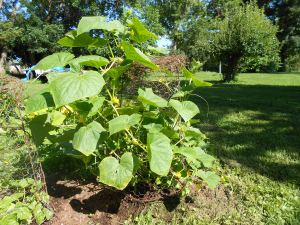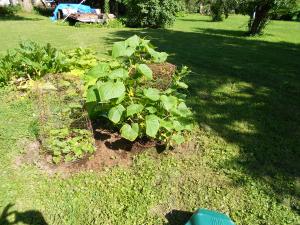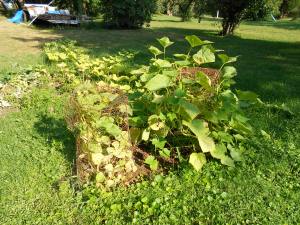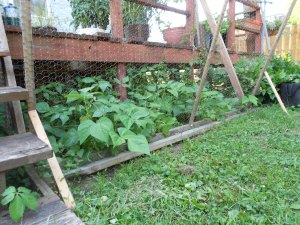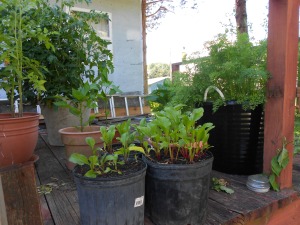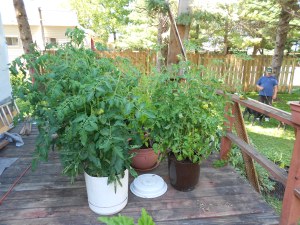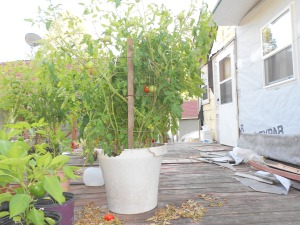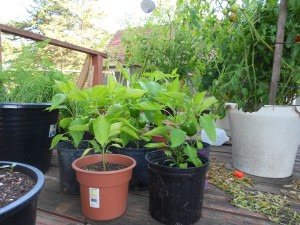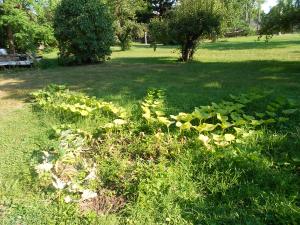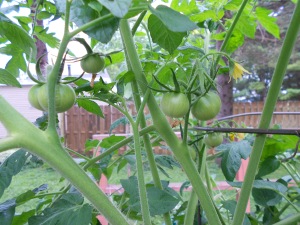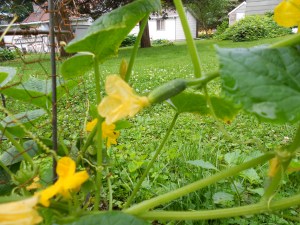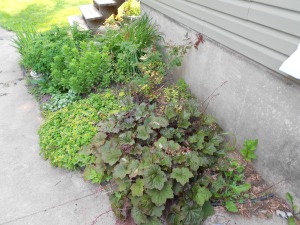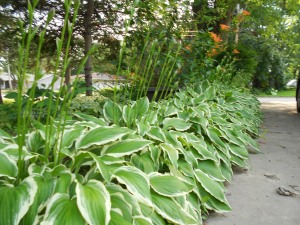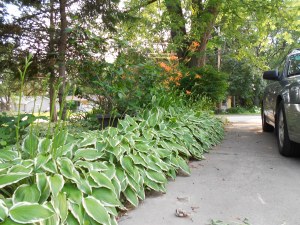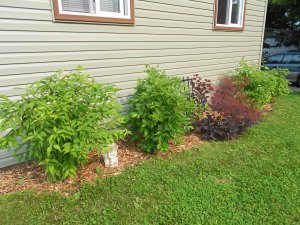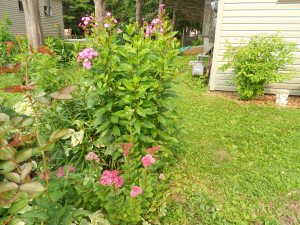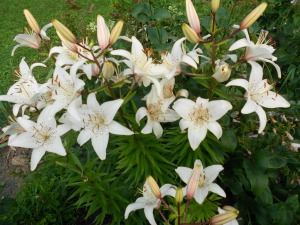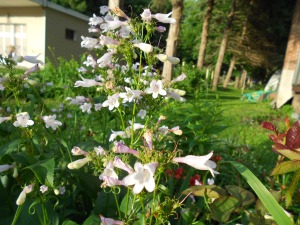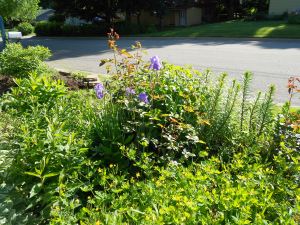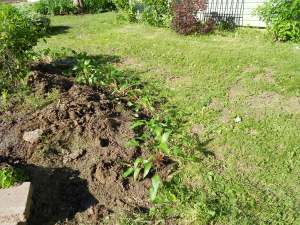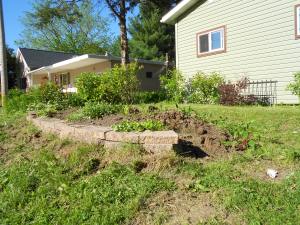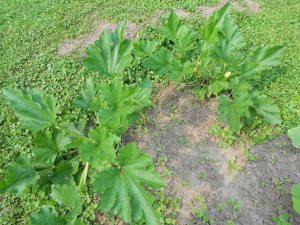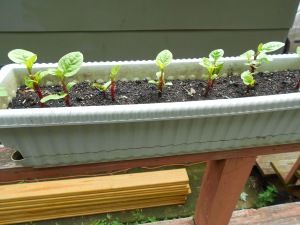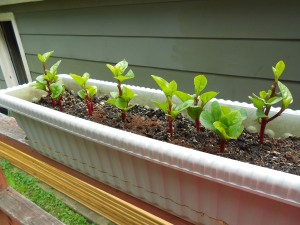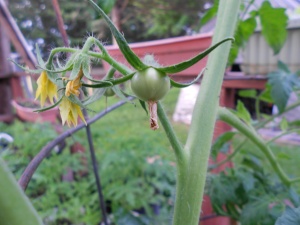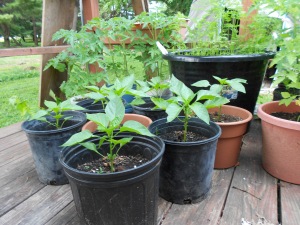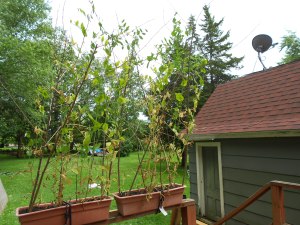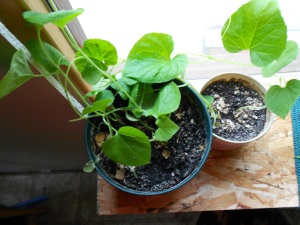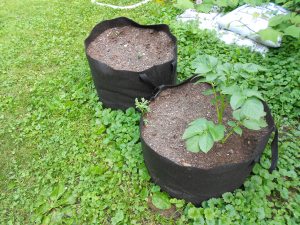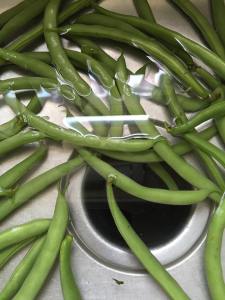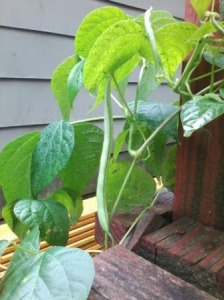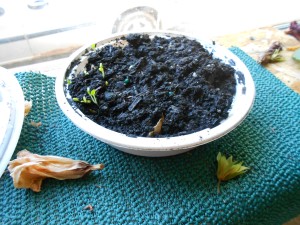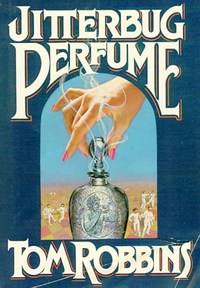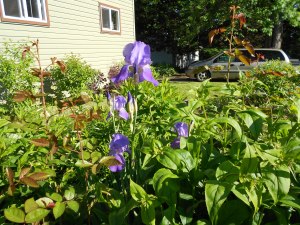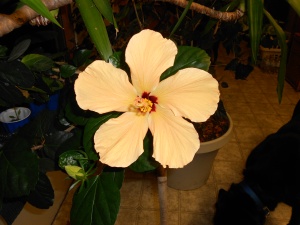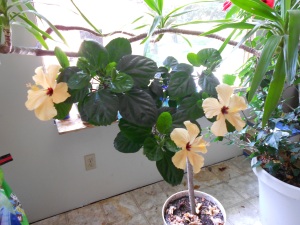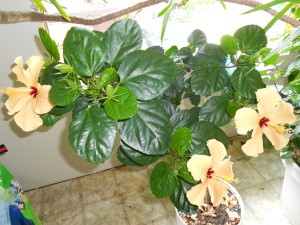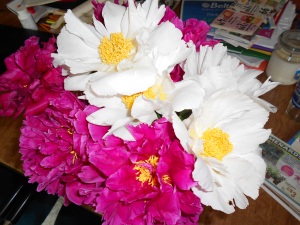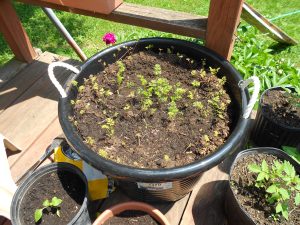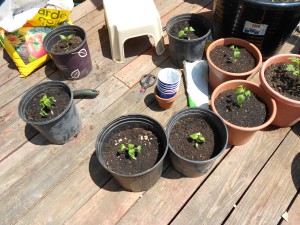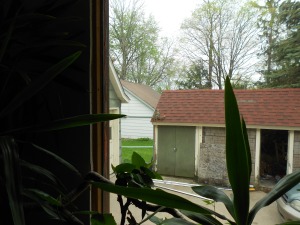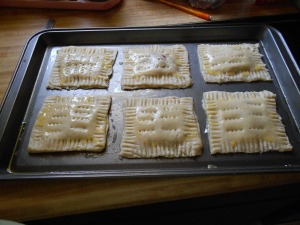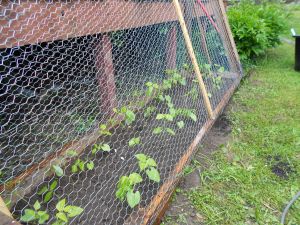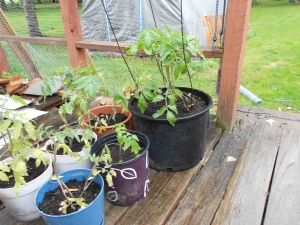Because it’s been raining every day and most of my plants are in their forever spots, I don’t have much new to report on gardening. All my veggies are happy with the excess rain. (My tomatoes are blooming!) We don’t have a good system for collecting rain water yet (future goal), so I’ve been letting a large tote fill and then filling all the gallon jugs I’ve saved. I shouldn’t have to use my hose for a while, which is good on the water bill.
With nothing to report yet and an itch to write, I’ve decided I want to tell another of our sustainable stories from last summer. The inspiration comes from the It’s Not a Slow Car, It’s a Fast House blog. Last May, my husband and I traveled to San Clemente, CA to stay with his daughter for two weeks. She lived in a cute two-bedroom apartment near the beach and was paying $1900 a month for rent. She talked about wanting to live a simple life without all the expense. She said she wanted a small camper to live in as she traveled from place to place. She wanted to be freer and in more control of her destiny.
When we returned home and continued our weekly treks from town home to country home (100 miles apart), we encountered a 1982 Volkswagen Vanagon for sale on the side of Route 20 in Illinois (Pic 1).

We knew immediately that it would be perfect for our daughter (technically, my stepdaughter, but I would claim her if I could). I will call her Zeedle for blogging purposes. When we looked at it, we knew it would need a ton of work to make it livable. It had been sitting in a barn for about five years, and the mice had made it their home. Every cavity had become a mouse home. We took pictures (Pics 2, 3, 4, 5), sent them to Zeedle, and asked her if she would like us to purchase it on her behalf and restore it for her to live in. She went for it, so we made an offer and worked for about a month on an acceptable price.

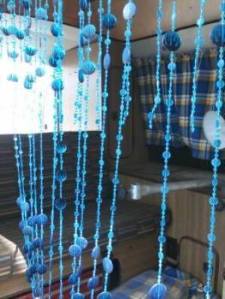

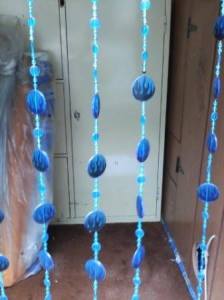
Before we left California, all of us had agreed to meet at my mother’s in Colorado in August because we had purchased tickets to see The Head and the Heart with Iron and Wine at Red Rocks in Denver. So, we rearranged our plans a bit to include bringing the restored Vanagon with us to pass on to Zeedle. We would drive two vehicles to CO, and she would fly to CO and drive the Vanagon home to CA. We grossly underestimated the time it would take to restore the Vanagon, and we barely gave ourselves enough time to get it ready enough to make the trip. However, we got it to a point that Zeedle could drive it home and finish it herself.
First, we took it to a mechanic for new tires and brakes. Then, we gutted the inside down to the steel (Pics 6, 7, 8). Covering the dash with plastic, we pressure washed the inside at a car wash. We made a tiny customized vacuum attachment for the shop vac to clear the vents. I bought long cleaning tools to scrub the vents and also scrubbed every inch of the inside. We pressure washed the seats, as we wanted to let Zeedle decide on the upholstery design.
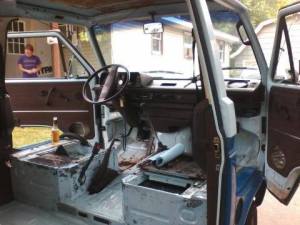

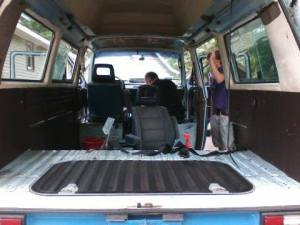
We kept all the original cabinetry, and my husband cut out the moused parts and reconstructed them with new material. Not all of the cabinetry came with it when we bought it, so he made a new cabinet to hold the sink and refrigerator. We intended to install the stove, but Zeedle decided she would rather have the space, so we sold the stove via Craig’s List in CO.
My son had stored an old camper in our backyard with the intentions of restoring and selling it, but it became obvious that it was just going to sit there. So, we took as many parts from it as we could for the Vanagon, including water pump and pipes, lights, stove, sink, hinges, etc. (We’ve since turned the old camper into a 27-foot trailer!) We bought a solar panel, storage batteries, ac/dc/propane refrigerator, porch carpeting for lining, vinyl flooring (Pic 9), wainscoting (Pic 10) for the cab ceiling, and tons of glue. Otherwise, we repurposed material we already had. The cleaning and reupholstering took a few weeks to complete. We worked night and day for about three weeks, including a week into our vacation in CO. (Thanks, Mom, for letting us commandeer your backyard!)

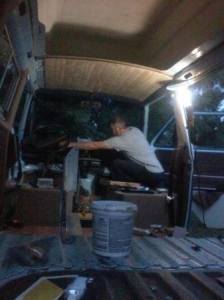
In the end, my husband had to reconfigure the starter due to a power drain on the battery. (The mechanical stuff is lost on me.) I drove the Vanagon to CO myself without brake lights, as the mechanic screwed something up on the master cylinder when putting the new brakes on. The VW dealer wanted to charge us hundreds of dollars for the part, and my husband managed to pick up the part for ten dollars from a VW restoration shop. (Always look for a second – or more – opinion!) The trip was difficult and sweltering, as the Vanagon’s top speed is about 60 mph on flat terrain. The previous owner had rebuilt the diesel motor, and that speed is all we could expect. (I induced a lot of road rage from other drivers on the trip!) It was an interesting journey, as I watched people’s reactions when they saw the Big Blue Vanagon—pure disgust to smiles and peace signs, and many people whipped out cameras to photograph it while laughing. The Vanagon was in great shape by the time Zeedle had to leave CO (Pics 11, 12, 13, 14).

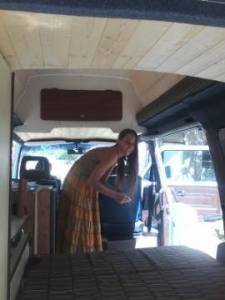

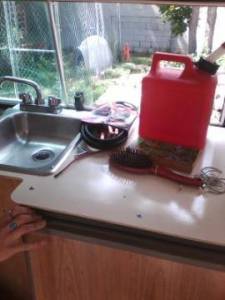
Since then, she has turned it into an adorable, inviting home for her and her cats, and she has lived in it for almost a year now (Pics 15-22). We could not be more pleased with the home she (and friends) made of that once decrepit jitney (as my grandmother called it. Those crosswords do come in handy, Granny!)
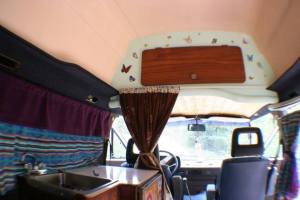







Ultimately, I had thought that my children taught me all the patience I’d ever need, but the Vanagon trumped that notion by far. I also learned that my husband and I make an able partnership for sustainable innovation, as we both have tons of great ideas for getting the maximum use out of available resources. I am confident we have what it takes to reach our ultimate goal of starting a sustainable community. AND, my husband and I are in search of a Vanagon of our very own—to practice how we roll, one sustainable act at a time…
